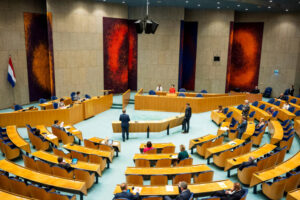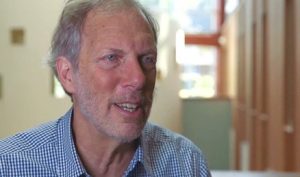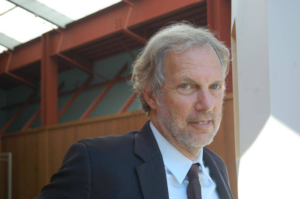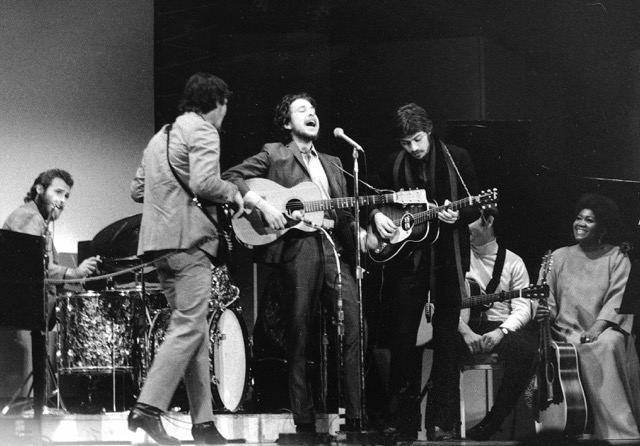Religiously Based Political Parties In Democracies. The Case Of The Netherlands
Since the Netherlands became a full-fledged democracy in 1848 political parties of diverse ideological backgrounds competed for the vote of the electorate, be they Christian parties, liberal parties, socialist parties, and more recently populist parties. Religions claim that their values are God given and therefore immutable. In a democracy with several ideological streams seeking representation in Parliament, it is in most cases difficult if not impossible for one party to obtain more than 50% of the votes, and that poses a challenge to those religious parties that claim to base themselves on ‘universal’ God given values[i]. They have either the choice to stay in an oppositional role in Parliament and continue giving voice to their opinions. The other option is that they seek alliances with parties to which they resemble in order to form a government. But that last strategy implies that they must be prepared to reach compromises with other parties, thus possibly renouncing in cases the ‘eternal’ values the parties claim to represent. The preparedness to compromise goes by the way as well for secular parties that claim ‘universal truths’, but the difference between religious parties and secular parties is of course that religious parties claim that their values are of a higher nature, i.e. coming from God.
This article treats how the mechanisms of compromise work in the Dutch political system, focusing in particular on religious, in the Dutch case, mostly Christian political parties that enter coalition governments with other -often- secular parties. The article first presents a description of the Dutch political system and its Constitution, and the coming to being of the Dutch Nation State. Then it goes into the subject of how governments are formed in the Kingdom. Following, the article treats the specific case of how the 2017 Dutch coalition government was formed and how it treated the highly sensitive issue of euthanasia law in its coalition agreement, where an orthodox Christian party and a secular party had to come to terms on this issue. I use this case as to show how a religious party can function in a democracy with, in the Dutch case, mostly non-religious parties.
1 The Dutch Political System and Constitution
The Netherlands form since 1848 a constitutional Monarchy in which the King functions as a symbol of the unity of the people of the Netherlands but he does not hold any political power. The government, consisting of the Prime Minister and the Ministers, exercise power and are held responsible for their acts in Parliament. The Dutch Parliament consists of two Chambers. The Second Chamber is elected directly by the people and consists of 150 seats. The electoral system is of a representative nature, implying that the total number of valid votes in elections is divided by 150. The Netherlands does not have constituencies like the United Kingdom and France have. The First Chamber consists of 75 seats and is elected indirectly by the representatives of the 12 provinces the country counts. The country has a tradition that in elections no party ever obtained an absolute majority in Parliament and therefore coalition governments always ruled the country[ii].
The first article of the Dutch Constitution reads as follows[iii]:
‘All persons in the Netherlands shall be treated equally in equal circumstances. Discrimination on the grounds of religion, belief, political opinion, race or sex or on any other grounds whatsoever shall not be permitted’.
This first article stipulates that all persons that live in the Netherlands are to be treated equally in equal circumstances. The fact that one is a man or a woman, that a person has Dutch roots or German, Chinese or any other root, that a person has conservative political opinions or progressive opinions, that a person is heterosexual, homosexual or transgender and that a person is a Christian, a Jew, a Muslim or an atheist, does not make a difference in their treatment.
Article 6 of the Constitution concerns the freedom of religion or belief and it is formulated as follows, in two parts[iv]:
– Everyone shall have the right to profess freely his religion or belief, either individually or in community with others, without prejudice to his responsibility under the law.
– Rules concerning the exercise of this right other than in buildings and enclosed places may be laid down by Act of Parliament for the protection of health, in the interest of traffic and to combat or prevent disorders.
Interesting in article 6 is that it mentions not only the right to profess freely one’s religion, but also one’s conviction (my italics). Conviction explicitly refers to non-religious beliefs, not necessarily religious ones. So, people with religious and non-religious, or secular, convictions have the right to profess these in Dutch society.
The present Constitution of the Netherlands is based on its first draft that dates to 1848.
2 The genesis of the Dutch nation state
In 1789 the French revolution took place. The world would soon learn to know the new French regime based as it was on the principles of the Enlightenment. The French revolution would be the cradle of modern democracy and France would soon spread the revolution over Europe. French revolutionary troops occupied the Netherlands in 1795 causing the ruling prince Willem V to flee to Germany[v]. In the Netherlands there were at that time already citizens, referred to as ‘patriots’, who supported the principles of the Enlightenment, opposing the prince and the nobles that wanted to stick to the old rule. The Netherlands knew until 1795 a decentralized government in which the several provinces enjoyed great autonomy. With the French and patriots taking over, the country formed a National Assembly that set itself in making a Constitution based on the principles of the French Revolution: Liberty, Equality and Fraternity. This was though no so simple. The Netherlands was until 1795 basically a country where the Protestant church was dominant and where the two other religious denominations, i.e. the Catholics and the Jews, were second rang citizens that never got positions in the local and provincial boards. The 80-year war against Spain (from 1568-1648) led to throwing of the yoke of the Spanish (and Catholic) occupier and although the Dutch Republic was at that time a relatively tolerant power in Europe when it comes to religious freedom, the Protestant church was dominant, and all other religions were subordinate to it. And now the new State had to develop a constitution that would guarantee liberty and equality to all citizens, including the Catholics and the Jews. It took a long time before the debates in the National Assembly led to a Constitution and laws that foresaw in the principle of equality for all but in the end, it managed to do so[vi][vii].
The French occupation ended in 1813. The French troops left the country to assist Emperor Napoleon in the last battles he fought and which he ultimately lost. The country looked back at 18 years of French presence. From 1806-1810 Napoleon had changed the country into a Kingdom with his own brother Louis Napoleon on the throne. Louis Napoleon was not a bad king. He tried to develop the country as much as possible in the spirit of the French revolutionary principles. When the French left, the country had a constitution that foresaw in the equality of all its citizens. The paradox of the period after the French left is that the Dutch nation state remained built on the principles of Enlightenment. There were voices in society that called for a retour to the situation before 1795 but the enlightenment ideology was stronger than the conservative forces. The Netherlands kept a constitution based on the enlightenment. The son of the late prince Willem V came back to the country to become the future King Willem I, and he as well submitted to the new order. The country wet itself in developing as a modern nation state, centrally governed, investing a lot in infrastructure and education.
In 1848 a reform of the constitution took place making the country more democratic than before. One of the major changes was that the King lost the political power he still had. A government that was democratically elected without any interference of a hereditary sovereign should rule the country. The King protested but accepted his limited role as head of state only. The principles of liberty, equality and fraternity had in the end led to a society, which not only legally foresaw in equal chances for all, but also in reality[viii].
3 A country of coalitions
The Parliamentary elections in the Netherlands of March 2017 shattered the political landscape more than ever with 28 parties participating in it and having 13 of them obtaining seats in parliament that does not know a threshold. Four parties have a religious background. It concerns the CDA (Christian Democrats; 19 seats), Christian Union (Orthodox Protestants; 5 seats), SGP (Fundamentalist Protestants; 2 seats), and newcomer DENK (Muslims; 3 seats). I treat the party programs of SGP and DENK first, followed by CDA and Christian Union further below as the two last ones would become part of the new coalition government.
The SGP represents the most orthodox or fundamentalist Christians in the country. The party was established in 1918 and has been represented in Parliament since 1946, never with more than 2 or 3 seats. They are part of an old tradition and its members are very conservative, supporting the Monarchy and, more importantly, believing that Christian Values are eternal. From this conviction, the SGP states on its website that that the government, as ‘God’s servant’, has the task of promoting justice and righteousness in line with what God tells the people in His Holy Word, the Bible[ix]. There must, they claim furthermore, be ‘strong action against radical Islamic ideas’. However, this struggle ‘should not be used to curtail the freedom of organization of churches’.
DENK is the most recent religious party entering the Parliament with three seats. It originally split from the Labor Party and it bases itself on ‘universal human values’ but in practice its members are quite ardent supporters of Turkish President Tayyip Erdoğan and his AK Party, while claiming as well to represent the Muslim community in the Netherlands.[x] When it comes to the freedom of religion they are, as stated on their website, in favor of supporting and funding Islamic educational initiatives and in favor of offering training to Muslim spiritual leaders and imams.[xi] According to DENK, there are more people in the Netherlands who must accept integrated people than people who still need to integrate. The party program of DENK stipulates that integration applies to newcomers, not to people who are born and / or raised in the country. DENK is in favor of appointing a ‘Minister for Mutual Acceptance’ in the government. Both SGP and DENK are in an oppositional role in the Parliament, being therefore no part of the coalition government that was formed in 2017.
The government that was formed after the 2017 elections consists of a coalition of four political parties that had together a minimal majority of 76 seats in the 150 seats Parliament. The biggest party furnished the Prime Minister, in this case the Liberal Party (VVD), possessing 33 seats. The other coalition parties were the Christian Democrats (CDA) with 19 seats, the Liberal Democrats (D66) as well with 19 seats and the earlier mentioned Christian Union with 5 seats.
In the Dutch political tradition, parties negotiate the conditions on which they form a new government. These negotiations can take a long time; in the case of the 2017 government, it was a record period of 225 days. The fact that in this government four parties participated made it a complex exercise as, and that is also part of the Dutch traditions, the agreement that is made between the ruling parties, is always very much detailed. Subjects of all possible nature are they social, economic, national, international, moral, or ethical, are discussed and in the end agreed upon, by compromises. It is impossible that one specific party completely gets what he wants as often interests are contradictory and parties must find the path to compromises, which is sometimes very hard. In what follows I discuss an example of how the 2017 government dealt with a subject on which two of the four coalition parties hold diametrical opinions. It concerns the issue of euthanasia law. The Liberal Democrats are basically in favor of a very liberal policy on this issue while the Christian Unionists are principally against it.
4 Euthanasia: a thorny issue
The Netherlands has laws and regulations concerning euthanasia[xii]. The euthanasia law states that a doctor may assist in life termination or suicide. He must in such cases comply with the care requirements as stipulated by the law. The law also describes how the physician’s actions must be reported and assessed. Euthanasia and assisted suicide are only legal if the following six requirements in the euthanasia law are met with:
– The doctor is convinced that the patient’s request for euthanasia is voluntary and well considered.
– The situation of the patient is hopeless, and he suffers unbearably.
– The doctor informed the patient about his situation and his prospects.
– The doctor and the patient concluded that there was no reasonable other solution.
– The doctor has consulted at least one other independent doctor who has seen the patient. This doctor gave his judgment in writing about the situation, based on the care criteria of the law.
– The doctor has carefully executed his role in the termination of life or assisted suicide.
For the electoral campaign for the 15 March 2017 elections the diverse parties striving for seats in the Second Chamber, prepared their election programs, which included statements on euthanasia as well. In the public debate on euthanasia the euphemistical term ‘completed life’ was used more and more instead of ‘euthanasia’. However it may be, the four parties that would in the end form the new government issued the following points of view on euthanasia in their programs:
VVD (Liberal Party) ‘We support the expansion of the possibilities (i.e. of the euthanasia law) to find a solution for everyone that does justice to everyone’s individual wishes. Also for people who consider their life complete without medical cause’[xiii].
CDA (Christian Democrats) ‘We are not in favor of a further extension of euthanasia law or a bill that regulates a right to life termination. It is important that people also have the courage to advocate alternatives for the end of life issue’[xiv].
D66 (Liberal Democrats) ‘People who conclude that their life is complete must be able to decide for themselves how and when they want to die. D66 thinks that the provision of a last-will pill should be possible under strict conditions of care and testability in such situations’[xv].
CU (Orthodox Protestants) ‘The Christian Union is not in favor of the euthanasia law, in which the government legitimizes that doctors put an end to the life of a fellow human being. We can never consider euthanasia as a normal medical treatment. The Christian Union wants to look after our elder people and give them the attention they deserve’[xvi].
It may be clear that the four points of view can be spread over a scale of a very liberal policy on the issue to a very conservative one. The Liberal Democrats aim for broadening the options for euthanasia, also for people, whose ‘lives are complete’, thus those ones who do not suffer from an actual physical disease. The Christian Union supports maximum help of the government to old people, who are ill, or whose ‘lives are complete’ in order to optimize -the last phases of- their lives. The Christian Union is bluntly against the current law and states that only care to elder people is the solution to their possible suffering, loneliness and pain. The Liberals aim as well at expending possibilities of the current euthanasia law but not as drastic as the Liberal Democrats suggest, and the Christian Democrats want to stabilize the current euthanasia practice while not changing the law.
Due to all kind of political developments, with populist parties obtaining 22 seats in Parliament, the Labor Party that lost 29 seats (from 38 to 9) and the Green Left party that won (from 4 to 14) but all of them refusing to be part of the new government, each one for its own reasons, the task of forming a government was in the end on the shoulders of the four parties mentioned above. To them was the challenge to overcome their differences, also on the sensitive dossier of euthanasia. In the following paragraph I discuss the compromise that the four parties reached in the end.
5 Reaching a compromise
The four parties that ultimately made a new government found each other relatively easy on dossiers of socio-economic nature. In that field the Christian Union sided very well with the Liberal Democrats, both parties being more left on the scale when it comes to socio-economic issues, while Liberals and Christian Democrats are more to the right in this field. So, when all the four parties reached in the end compromises in these dossiers, which have by nature less to do with God given values than euthanasia, the greatest challenge was to reach a compromise on the highly sensitive issue of euthanasia law. And they succeeded, as in the end an agreement was reached[xvii]. Focusing in this article on the issue of euthanasia I present what the final document forming the principles of the new government had to say on this subject. In what follows I analyze the compromise, using Political Discourse Analysis (PDA) method[xviii], based on the following three quotes from the coalition agreement:
Quote 1: ‘Certainly when it comes to issues relating to life and death, there is sometimes a fundamental difference in opinion in society and politics. In the field of medical ethics there are major differences of opinion between the parties that form the basis of the new government’.
The first step to a compromise is to put the similarities and differences of opinion on the table. There are major differences of opinion on issues ‘in the field of medical ethics’ between the parties to be part of the new government. Note that the word ‘euthanasia’ isn’t even mentioned in the first quote. Above we saw in the description of the diverse statements of the four parties where they stand in this dossier and politically speaking the most eye-catching differences lie in the opinions of the Christian Union on the one hand and the Liberal Democrats of D66 on the other hand. Both these parties found each other easily on dossiers of a socio-economic nature, partial reasons for them to enter the coalition, but in the ethical field they couldn’t be further away from each other. Both parties, and in fact all political parties have of course a major interest in keeping their voters content with the course they follow and the compromises they make. In that sense this first remark, the observation that in the field of medical ethics major differences are on the table does justice to the parties involved, in particular the ones that are on the extremes of the scale. This remark tells their voters and constituencies: ‘we know about these differences and we respect each other’s point of view’.
The following step then is perfectly expressed by the second quote:
2 ‘In deciding on these subjects, existing legislation and regulations are the starting point for all parties. When there is a reason to adjust these laws and regulations, the government will do so in a manner that considers the conviction of all parties that the government support and on the basis of the general assessment framework as described below’.
The first sentence of the second quote makes clear where all the parties stand: the acceptance of the existing legislation and regulations of euthanasia. It is a tradition in the Netherlands’ democracy to accept all decisions taken by any earlier government, also if a party has an oppositional status, and even if a party does not agree at all with the contents of a certain law. So basically, all four parties accept the status quo, and it is this status quo that is considered to be the basis for possible modifications. The following, second, sentence is politically more sensitive where it says ‘if there is a reason to adjust these laws’. It keeps the time and subject frame empty. It does not say when in the future such a change might be relevant and more importantly, it does not mention as well the party or parties that take the initiative for such changes. This leaves lots of political room to the parties involved forming the coalition government. Then, still expressing respect to all parties’ points of view, the text states that if a change should be applied, it will be done taking into account the ‘conviction of all coalition parties’. It may be clear that this sentence, that is very vague, continues to breath the same spirit as does quote 1: creating a broad platform between the four parties, that all four of them can interpret as they wish. More specific and politically relevant the key issue is though in the last sentence which refers to the question how such a change should be made possible. It refers to ‘the general assessment framework’ that is subsequently given shape in the third and last quote:
3 ‘In consultation with Parliament, while retaining everyone’s own position and responsibility, the government will facilitate a broad discussion on the dignity of aging, the scope and application of current euthanasia law and the subject of completed life. With the outcomes of the aforementioned research, the government will consider what it can do, and the Chamber can independently decide to propose legislation’.
Here we see what kind of procedures the new government has in mind for the thorny issue of euthanasia (euphemistically referred to as ‘completed life’). The new government strives after a broad societal discussion on the issue encompassing all aspects of it: ‘the dignity of aging’, ‘the scope and application of the current euthanasia law’ and the ‘subject of completed life’. Interesting is the phrase ‘dignity of aging’ which the conservative Christians may interpret as giving maximum social and medical care to old people who suffer mentally or physically and the Liberal Democrats as giving these same old people the maximum of options to decide to end their lives themselves and making that practically possible. In the same vein we can interpret the second phrase ‘the scope and application for current euthanasia law’ which the Christian Unionists may interpret as limiting it and the Liberal Democrats as extending it. Then, if this discussion, if it will ever take place, is finished (and the text does not say if it will finish and how it will finish and who decides to finish it) the government ‘considers what it can do’ which is very vague but politically very clear: all options are open, and by the last phrase ‘the Chamber can independently decide on initiative legislation’ is meant that Parliament itself can take the initiative and come with new legislation on the issue, thus relieving the government from doing it itself, escaping as such the responsibility of the dossier, but taking the risk that there might be a majority in parliament for either limiting euthanasia law, as intended by the Christian Union, or extending it, as aimed at by the Liberal Democrats, and if any of these two proposals would have a majority in parliament (it is not excluded that opposition parties will support the proposals) the government is faced with a possible problem: which of the two will it support? But it seems that the actual goal of the current government is that it hopes that it will never come that far as, after all, we have to wait for the results of the ‘nationwide debate’ and if that takes place, and one never knows when it ends, and it might even end after the term of the current government, which would be a relieve for the conservative parties which absolutely do not want an extension of the practice and a disappointment for the Liberal Democrats who want it extended. At the same time, if a new euthanasia bill is put to the vote in parliament, either in favor of extending it or limiting it, the parties forming the coalition are expected to be loyal to the whole government’s position on the dossier and if that would not be the case, and the government falls on this dossier, it has to give up as well the much more important social economic policies it wants to implement which have a much broader base and support within the coalition. That is the price it eventually must pay.
6 Evaluations
A reader might wonder what the value is of the compromise that the 2017 Dutch government reached when it comes to the issue of ‘completed life’ or euthanasia. In the one scenario nothing changes and in another scenario the law on euthanasia will be modified minimally. In the first case the conservative Christian Union will be the winner and in the second case the Liberal Democrats. Looking back at how the 2017 government functioned, and that ended with the elections of 2021, it turned out that in the end the euthanasia law did not change at all. This fact can be considered a win for the Christian Union and a loss for the Liberal Democrats: for the former any change would have been a loss and for the latter no change is a loss. Furthermore, I believe that, looking back at the term of the 2017 government, the government deliberately aimed at ‘no change’ because the euthanasia dossier was so sensitive for the Christian Union that it might have left the government with as consequence that it might have fallen (remember that the 2017 government had a majority in parliament of one seat only). The 2017 government had a great interest in applying its social economic policies and it deliberately formulated the agreement text on euthanasia in such a way that no change would ever take place. That would then be the price for the Liberal Democrats to pay for their participation in the government. But the things the party got in return were a great financial investment in education, which the party regards as highly important in its party program. The price the Christian Union had to pay is that the current euthanasia law is maintained. In that sense the party supports in fact a practice that goes completely against its conviction that God rules over the beginning and end of someone’s live. But their gain was that the law was not extended during the rule of this government of which they were part.
Philosopher Niccholo Macchiavelli (1469-1527) stated in his Il Principe that a modern good government bases itself on texts that give the impression to be crystal clear but that in fact hide a real political agenda and that keep all options open[xix]. Is that a form of deceiving the people? In the end that might indeed be the case, but the option of parties exposing their policies in the open, showing their vulnerability, teaches us that ultimately no good and effective polities follow. The struggle for power happens by nature through rhetoric and compromise and whatever negative name rhetoric and compromise have, these concepts help to establish a solid government in democracies, be they of any ideological color, secular or religious[xx].
If a party, based on religious principles and beliefs, enters the arena of democracy, it must realize that it must negotiate political issues with other political parties. In doing so, religious parties may have to violate their own principles or beliefs. At the same time, just because this kind of parties enter the arena of democracy, they can also hinder legislation that opposes their values. In this way they can defend their values: their democratic presence gives them the opportunity to voice their visions on all kind of themes that are important to them. They learn that they can never reach 100% of what they want but reaching some of their political goals or part of them is in all cases, better than reaching nothing. In the case of the Netherlands we see that the diverse Christian parties have always had a solid say in all political decisions taken by the government.
Notes
[i] Stephen Monsma & Christopher Soper, The Challenge of Pluralism. Church and State in five Democracies. (Lanham: Roman & Littlefield Publishers, 2009).
[ii] Sander Bax & Jan Jaap de Ruiter, ‘Church and state in the Netherlands. The case of Islam, Hartmut Behr & Marcus Hildebrandt (eds.), Politik und Religion in der Europäische Union. Zwischen nationalen Tradition und Europäissierung. (Wiesbaden: VS Verlag für Sozialwissenschaft, 2006): 201-225.
[iii] https://www.government.nl/documents/regulations/2012/10/18/the-constitution-of-the-kingdom-of-the-netherlands-2008
[iv] See the website mentioned in note 3 for the text of article six as well.
[v] Simon Schama, Patriots and Liberators: Revolution in the Netherlands 1780-1813. (New York: Harper Collins Publishers, 2010).
[vi] Cf. Schama 2010.
[vii] Jan Jaap de Ruiter, ‘L’histoire des langues des juifs néerlandais: un cas d’émancipation réussite ?’, Langues et littératures. Journal de la Faculté des Lettres et des Sciences Humaines, Université Mohamed V 20, (2010): 63-84.
Jan Jaap de Ruiter, ‘Jews in the Netherlands and their languages’, Tilburg Papers in Culture Studies 116, (2014).
[viii] Cf. Bax & De Ruiter, 2006
[ix] https://www.sgp.nl
[x] Jan Jaap de Ruiter, ‘Muslims in the Netherlands: A Threatening Community or a Community under Threat?’, Moha Ennaji (ed.) New Horizons of Muslim Diaspora in North America and Europe, (London: Palgrave Macmillan, 2016): 229-242.
[xi] https://www.bewegingdenk.nl
[xii] https://www.rijksoverheid.nl/onderwerpen/levenseinde-en-euthanasie
[xiii] https://www.vvd.nl/nieuws/verkiezingsprogrammas/
[xiv] https://www.cda.nl/standpunten/verkiezingsprogramma/
[xv] https://verkiezingsprogramma.d66.nl/programma/zelfbeschikking-en-keuzevrijheid/#voltooid-leven
[xvi] https://insite.christenunie.nl/l/library/download/urn:uuid:b353eeb9-4a0d-4ad3-8835-05aeb4b4225a/Verkiezingsprogramma+2017-2021+ChristenUnie.pdf
[xvii] https://www.kabinetsformatie2017.nl/documenten/publicaties/2017/10/10/regeerakkoord-vertrouwen-in-de-toekomst
[xviii] Jan Blommaert & Chris Bulcaen, ‘Critical discourse analysis’, Annual Review of Anthropology 29, (2000): 447-66.
Teun van Dijk. Elite discourse and racism. (Newbury Park, California: Sage Publications, 1993).
Norman Fairclough, Critical Discourse Analysis: The Critical Study of Language. (London: Longman, 1995).
[xix] David Hawkes, Ideology. (London: Routledge. 2006).
[xx] Sam Leith, You talkin’ to me? Rhetoric from Aristotle to Obama. (London: Profile Books, 2011).

















